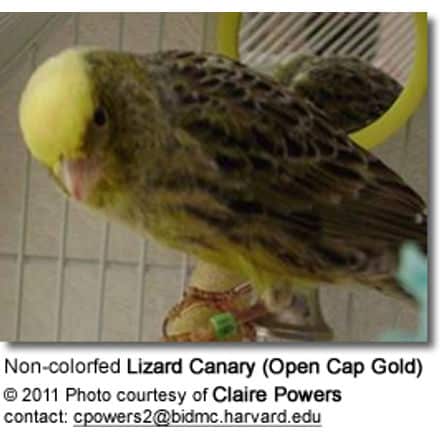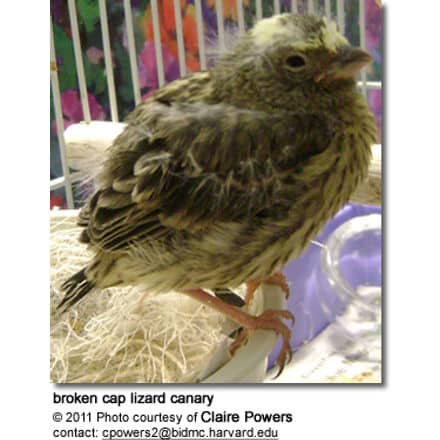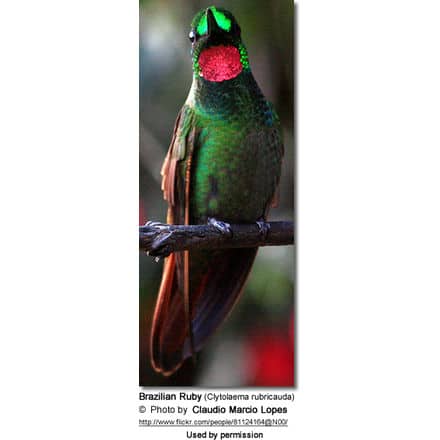Lizard Canaries
The Lizard Canary – one of the oldest breeds – is believed to have arisen as a mutation from canaries in France during the early 1700s.
These lizard-like canaries almost became extinct in the early 1900s due to the ravages of two world wars and disease epidemics. By the mid-1940s, only about 40 of these canaries existed in Europe.
To save this canary species, the Lizard Canary Association of Great Britain initiated a closely monitored breeding program.
Nowadays, it is now one of the most popular “Type Canaries”. Type canaries are bred for physical traits or shapes rather than color or song. The Lizard Canary is bred specifically for the “spangled effect” of its feathers.
Description:
The Lizard Canary averages about 5.5 inches (14 cm) in length (including its tail).
This canary is named for its beautiful markings – the black crescent-shaped spots running down its back and breast, which resemble the scales of a lizard. This visual effect is known as “spangling”. The Lizard Canaries gradually lose this lizard-like pattern with each annual molt.
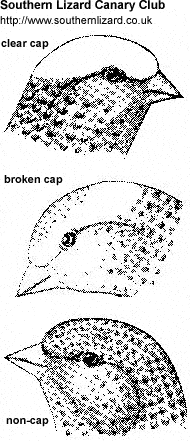
The Lizard Canary occurs in 4 colors:
- Gold Lizard (ground color of yellow)
- Silver Lizard (warm buff)
- Blue Lizard (white foundation)
- Red Lizard (red foundation)
Lizard canaries have a single circular pattern of feathers on top of the head, which ideally should be oval with clear edges, but some are irregular shaped circles.
The caps are typically identified as:
- Clear cap
- Broken cap
- Non-cap – The noncap lizard canaries should have a scale pattern from the beak to the spangle.
For exhibition purposes, the legs and the beak should be as dark as possible. This is sometimes achieved by color-feeding them.
The lizard canary is allowed to be color-fed to enhance their red plumage (please see the below photograph for color-feeding instructions), as are the Yorkshire and Stafford types. Hens generally carry more breast markings than cocks and cocks color up darker than females.
- Canary Information: General Care and Housing … Canary Species / Breeds … Canary Varieties …. Guidelines for Buying Your Canary
- Canary Breeding … Sexing Canaries … Canary Nutrition / Diet … Canary Diseases
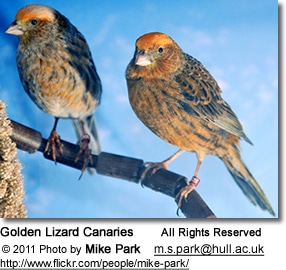


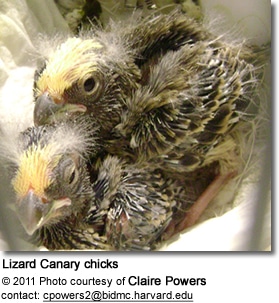


Color-feeding Your Canary:
Feeding foods rich in beta-carotene, or a supplement of half pure beta-carotene and half pure canthaxanthin will enhance any red coloration in the canaries’ plumage. However, color feeding is really only required when new feathers are growing in, and this usually occurs when birds are molting.
Commercially bought color supplements are available; however, they can be harmful to the birds’ health. A more natural feeding protocol that includes freshly grated carrots and chopped broccoli (or any other fruit/vegetable rich in beta-carotene) is equally effective and healthier. The results of the color feedings vary – depending on how much each individual bird eats…However, it should make a large difference compared to not “color feeding” at all, which will basically yield a yellow canary after the molt is completed.

The Lizard Canary in Aviculture:
The Lizard Canary is a friendly, social bird and a free breeder. As most canaries, they breed easily and readily, if provided with quality food, lighting, secure surroundings, and conditioning.
Lizard canaries tend to be good breeders. The female will lay 3 to 6 eggs, one per day. It is best to allow a hen to have only two clutches a year. Breeders will normally breed a full-cap / (clear cap or no cap) Lizard Canary to a broken cap.
Depending on location, Lizard Canaries are available at prices ranging from $50 to $150.
